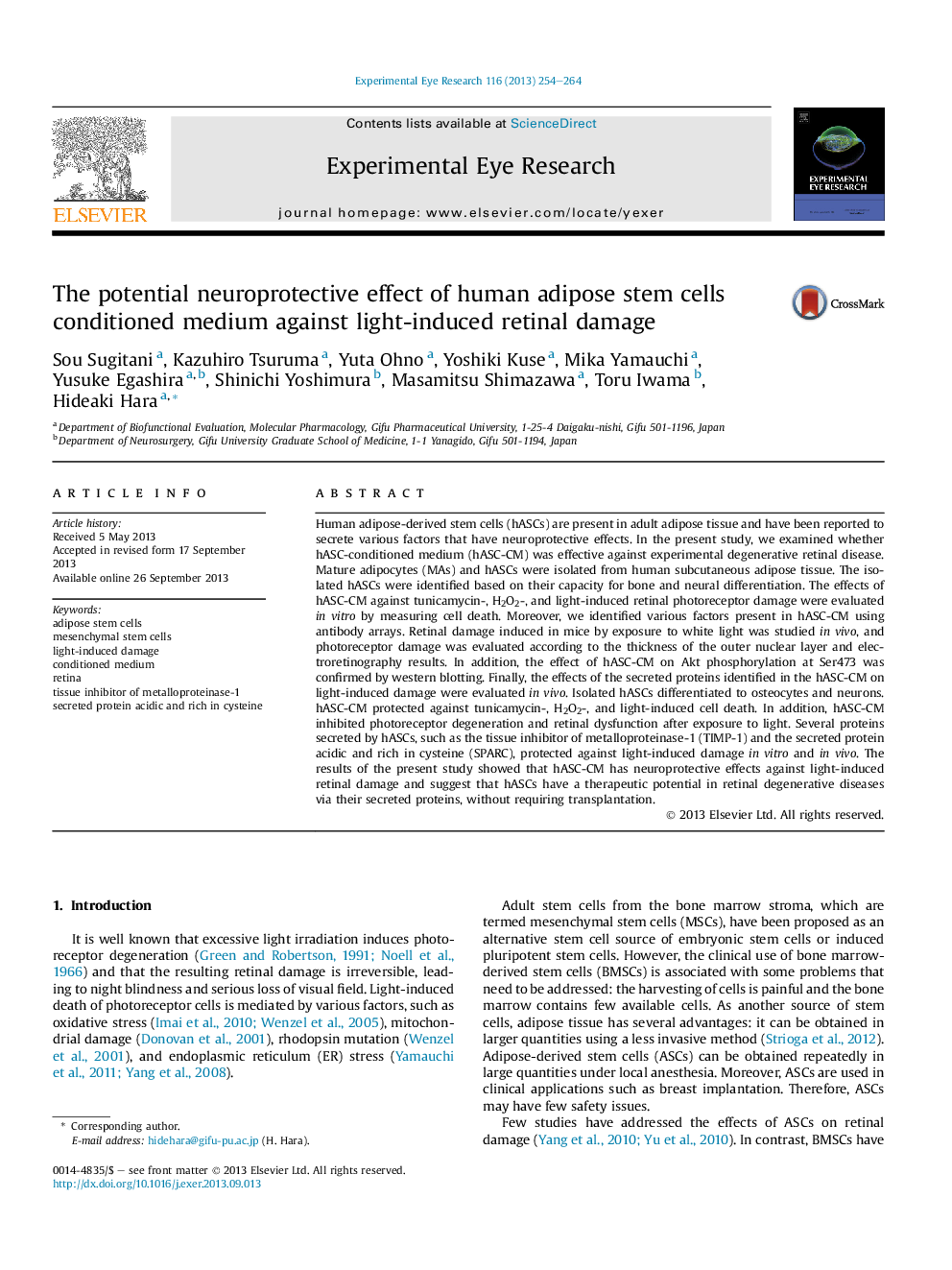| کد مقاله | کد نشریه | سال انتشار | مقاله انگلیسی | نسخه تمام متن |
|---|---|---|---|---|
| 6197212 | 1602606 | 2013 | 11 صفحه PDF | دانلود رایگان |
- This research concerns human adipose-derived stem cells conditioned medium (hASC-CM).
- hASC-CM protected photoreceptor cells against light exposure in in vitro and in vivo.
- hASC secreted several proteins such as TIMP-1 and SPARC.
- TIMP-1 and SPARC protected against light-induced damage in in vitro and in vivo.
- Akt phosphorylation was induced by hASC-CM-, TIMP-1 or SPARC treatment.
Human adipose-derived stem cells (hASCs) are present in adult adipose tissue and have been reported to secrete various factors that have neuroprotective effects. In the present study, we examined whether hASC-conditioned medium (hASC-CM) was effective against experimental degenerative retinal disease. Mature adipocytes (MAs) and hASCs were isolated from human subcutaneous adipose tissue. The isolated hASCs were identified based on their capacity for bone and neural differentiation. The effects of hASC-CM against tunicamycin-, H2O2-, and light-induced retinal photoreceptor damage were evaluated in vitro by measuring cell death. Moreover, we identified various factors present in hASC-CM using antibody arrays. Retinal damage induced in mice by exposure to white light was studied in vivo, and photoreceptor damage was evaluated according to the thickness of the outer nuclear layer and electroretinography results. In addition, the effect of hASC-CM on Akt phosphorylation at Ser473 was confirmed by western blotting. Finally, the effects of the secreted proteins identified in the hASC-CM on light-induced damage were evaluated in vivo. Isolated hASCs differentiated to osteocytes and neurons. hASC-CM protected against tunicamycin-, H2O2-, and light-induced cell death. In addition, hASC-CM inhibited photoreceptor degeneration and retinal dysfunction after exposure to light. Several proteins secreted by hASCs, such as the tissue inhibitor of metalloproteinase-1 (TIMP-1) and the secreted protein acidic and rich in cysteine (SPARC), protected against light-induced damage in vitro and in vivo. The results of the present study showed that hASC-CM has neuroprotective effects against light-induced retinal damage and suggest that hASCs have a therapeutic potential in retinal degenerative diseases via their secreted proteins, without requiring transplantation.
Journal: Experimental Eye Research - Volume 116, November 2013, Pages 254-264
